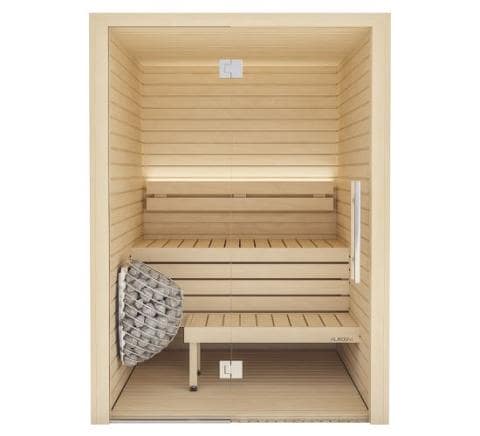Getting The Traditional Sauna To Work
Getting The Traditional Sauna To Work
Blog Article
Some Known Facts About Traditional Sauna.
Table of ContentsGetting The Traditional Sauna To WorkTraditional Sauna for BeginnersFascination About Traditional SaunaThe Buzz on Traditional SaunaTop Guidelines Of Traditional Sauna
The majority of the weight lost in a sauna is water loss and is re-gained upon rehydrating. However, undoubtedly sauna can be an essential part of a healthy fat burning program. To look at the differences in between standard and IR saunas, I will certainly divide these right into proven, academic, and produced differences.Therefore, the most popular point in the saunawhich is at the ceiling directly above the sauna heateris generally between 185 and 190 F. Claims that a standard sauna surpasses 200 F is just not true and not appropriate for electric saunas sold in the United States. The temperature level for a far-infrared sauna is usually established in between 120 and 140 F; nevertheless, unlike the standard sauna, the goal in and IR room is not to attain a heat.
Due to the fact that of this, the temperature level difference is practically unimportant, since profuse sweating leads to both sauna kinds, yet the method of warming the body is various. In an IR sauna the bather will certainly really feel warm and will sweat profusely, but at a lot reduced temperatures. Traditional Sauna. Thus, if the objective is to invest longer amount of times in the sauna, the IR sauna is a good selection

Not known Incorrect Statements About Traditional Sauna

When the high temperature level is attained, the components cycle on and off to preserve the high temperature level. Traditional Sauna. Many standard sauna individuals appreciate pouring water over the rocks to produce heavy steam to increase sauna humidity levels. The benefits of putting water over the rocks consist of: making the room a lot more comfy, moistening the nasal passages, and enabling the use of aromatherapy by mixing crucial oils with the water
In a far-infrared sauna, the warmth waves penetrate the body to effectively heat the body and raise the body core temperature level. To attain this raised temperature level, Far-infrared emitters develop infrared power which is close to the exact same wavelength as that which the body naturally emitsoften referred to as the "Vital Array" of 7 to 14 microns), so the power is well gotten by the body.
When the power gets in the body, it creates the body temperature level to boost and eventually leads to sweating. In an infrared sauna it is essential for the emitters/heaters to stay on practically regularly. Considering that there is no mass of rocks to keep warm, the sauna will certainly cool if the emitters shut off.
4 Simple Techniques For Traditional Sauna
As stated over, the sauna bather in an infrared room desires to position himself before operating emitters to obtain maximum gain from the warm. The heating time for the 2 rooms can be really different, relying on how the areas are used. For a conventional sauna, a bather should enable 30-40 minutes for the check here space to achieve a preferred temperature and to effectively pre-heat the rocks.
A well built sauna will typically accomplish a temperature level of 150-160 F in about 30-40 minutes. For hotter temperature levels, the area may need to warm for a longer duration.

Standard saunas often tend to be bigger (hence use even more power) than infrared saunas, although conventional saunas are absolutely available in one and 2 person dimensions as well. For a two-person typical sauna, 5x6 or 5x7 dimension is most prominent. The top bench can pleasantly seat 2 or three individuals and is additionally long enough to rest throughout the sauna session.
How Traditional Sauna can Save You Time, Stress, and Money.
The typical cost per kWH of power in the U.S. is about $0.11 - Traditional Sauna, so a 4.5 kW heating unit will certainly cost approximately $.50 to compete one hour, if the heating unit runs continuously for one hour. Commonly a sauna heater will run for 75% of the very first hour and 50% of subsequent hours on considering that the aspects my latest blog post cycle once the set temperature level is accomplished
A 2 individual far-infrared space is generally physically smaller sized than a traditional sauna, typically concerning 4' x 4' or smaller. The IR heating unit is generally 1.5-1.7 kW making description use of a 120 volt 15 amp plug-in service. Considering that the space can be used faster than a sauna room, we will certainly think the space is utilized for to of an hour including warmth up time.
There is a seldom talked about difference in the social experience in between the two areas. While our culture has shed several of the social benefit of the standard sauna experience, it can be extremely socially fulfilling. From family members time in the sauna, to heart-felt conversations with loved ones, to sauna partiesthe standard sauna experience can result in intimate mingling.
Not known Facts About Traditional Sauna
Many higher end infrared areas include tinted light treatment, sound systems and full-glass fronts.
Report this page